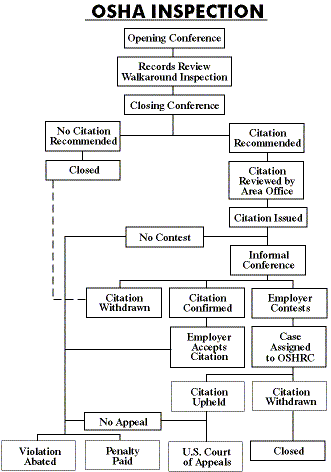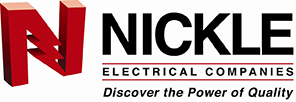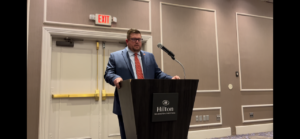The Occupational Safety & Health Administration has tons of regulations in place to keep employees safe in the workplace. Failing to comply with these regulations can spell disaster for your company and lead to inspection of your safety practices. Whether an OSHA inspection is planned or unexpected, it’s best to be prepared in order to avoid penalties and wasting time and money. Being prepared will also give you more control over the inspection.
A programmed inspection is scheduled when OSHA observes certain criteria, such as death or injury rates, numerous lost workdays, or exposure to toxicities. An un-programmed inspection will take place when there are certain occurrences, such as imminent danger (reasonable certainty that a danger exists that can cause death or serious harm), investigation of fatalities and accidents resulting in death or hospitalization of three or more employees, or when an employee files a complaint to OSHA about unsafe working conditions.

BEFORE
Managers should assess the workplace on a regular basis to make sure guidelines and procedures are being followed at all times. OSHA does have an inspection checklist, but you can create more detailed checklists for certain jobsites or areas to ensure regulations are being followed. That way you can avoid any surprises if the inspection is unplanned. Make sure you’re aware of all hazards that exist on the jobsite and what personal protective equipment is needed in those areas. Not only should the manager be aware of hazards, but employees on site should know of the risks they face and what the company has done to prevent an accident.
If you’re notified of the inspection ahead of time, make sure to thoroughly read through and understand why the inspection is taking place. If the inspection is a surprise, it’s your constitutional right to request that the compliance officer get a warrant, though it may not reflect well on your company. If you’re prepared, then consenting to the surprise inspection shouldn’t be a problem.
Before the inspection begins, make sure there is only one person in charge of the inspection with the officer. Too many parties can lead to differing accounts, which might look suspicious to the officer.
The OSHA officer has a right to see any documents listed on the warrant for an inspection. That could include injury and illness logs, safety programs, hazard communication programs, etc. If not requested, you’re not required to provide any other documents, nor should you, unless asked. Providing too much information could be detrimental, so limit the information you give to only the materials that are requested. If the officer requests other documents, ask that they submit the request in writing so there is a record of what was asked for.
DURING
The inspector typically decides on the route and duration of the inspection. The individual designated to the inspection should be with the OSHA officer at all times, do not leave him or her alone. Shadow the officer, follow his or her footsteps, take the same notes, and even take the same pictures and measurements. That way you both have the same record of what was done on site.
If for some reason the representative with the officer can’t answer a question, do not respond with “I’m not sure” or give potentially false information, as that it is a criminal offense. You’re allowed to say that you’ll get back to them with the correct info.
Though one person should be in charge of the inspection, the officer is allowed to ask employees questions as long as it doesn’t disrupt the normal work processes. If the interview takes too long and is preventing employees from performing their duties, the designated manager has the right to step in.
If the OSHA officer points out something that could possibly be a violation, don’t agree. If you agree that it’s a violation, you’ll likely be cited and fined. Simply absorb their observation and if the condition can be corrected at that time, feel free to do so. Avoid idle chit-chat as anything you say can be used against you. Stick to the basics and only offer answers and information when appropriate.
AFTER
There is typically a closing conference after the inspection where the officer will review their findings with the manager, obtain any other information, and answer any questions you might have. If the officer mentions a violation, don’t argue with him or her as you can be held responsible. After the inspection, OSHA has six months to issue a citation and you have 15 days to contest or comply.
CATEGORIES OF CITATIONS/PENALTIES
Other than Serious Citation – violations that aren’t a threat to cause death or serious harm.
Serious Violation – when death or serious harm could result and the employer knew or should have known about the hazard.
Willful Violation – when the employer intentionally and knowingly commits a violation.
Repeat Violation – when a previous violation hasn’t been corrected.
Depending on the penalty, your company could be paying tens or hundreds of thousands of dollars in fines. At worst, one of your employees could have died or been seriously injured. Being prepared for an OSHA inspection will not only save your company time and money, but can save the lives of your personnel. Make safety a priority within the company. Establish a culture based on safety so that it becomes second nature to employees. Everyone is responsible for safety, no matter your title or level within the company. Keep each other accountable and participate in safety programs and committees. Change the attitudes of your employees so they internalize the desire to perform safe work.




